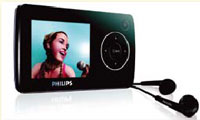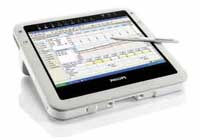Designing for green
What trigger is the company responding to?
Since its founding Philips has understood that the simultaneous pursuit of business interest together with socially and environmentally sound behaviour is critical to success. Philips has been working to minimise the environmental impacts of its products, processes and services since 1970. In the early 1990s, during a wide ranging restructuring of the business, sustainability was identified as a key part of the business moving forward.
early 1990s, during a wide ranging restructuring of the business, sustainability was identified as a key part of the business moving forward.
What was the response?
In the early phase of the company's response to 'green issues' packaging reduction, weight reduction and simplifying product architectures (resulting in lower assembly times) were successful. This improved the credibility of the environmental effort because it resulted in direct financial benefits.
In 1994 Philips began to set a series of measurable environmental targets. At the same time, Philips introduced the EcoDesign process which deals with all aspects of product creation. This has lead to the Philips Green range which contains products that perform 10% better than competitor products on at least one of the six key measures: energy efficiency, packaging, hazardous substances, weight, recycling and disposal, and lifetime reliability.
Philips are committed to generating 30% of total revenues from green products over the next five years (up from 15% in 2006) and intends to double investment in green innovations to €1 billion by 2012. It also hopes to further increase the energy efficiency of operations by 25% by 2012.
Bottom line benefits
Philips overtly promotes its green range and seeks to gain competitive advantage through the design and marketing of greener products, reaching customers not previously addressed by Philips. As a market leader in green products, Philips is also likely to be best placed to derive benefits and avoid problems associated with any future eco legislation.
The focus on the efficiency of the business operations has also lead to reduced energy consumption and reduced costs.
Wider lessons
Philips has recognised the business opportunity and long term necessity of addressing green issues, and aims to embed sustainability in all it does in terms of design, research and development. By integrating this into the way it operates, sustainability becomes not an additional cost, but part of business as usual and a means to gain long term competitive advantage.
Case study sources
Adventures in EcoDesign of Electronic Products, Prof. Dr. Ir. A.L.N. (‘Ab’) Stevels, Delft University of Technology, 1993-2007
http://www.philips.co.uk/









